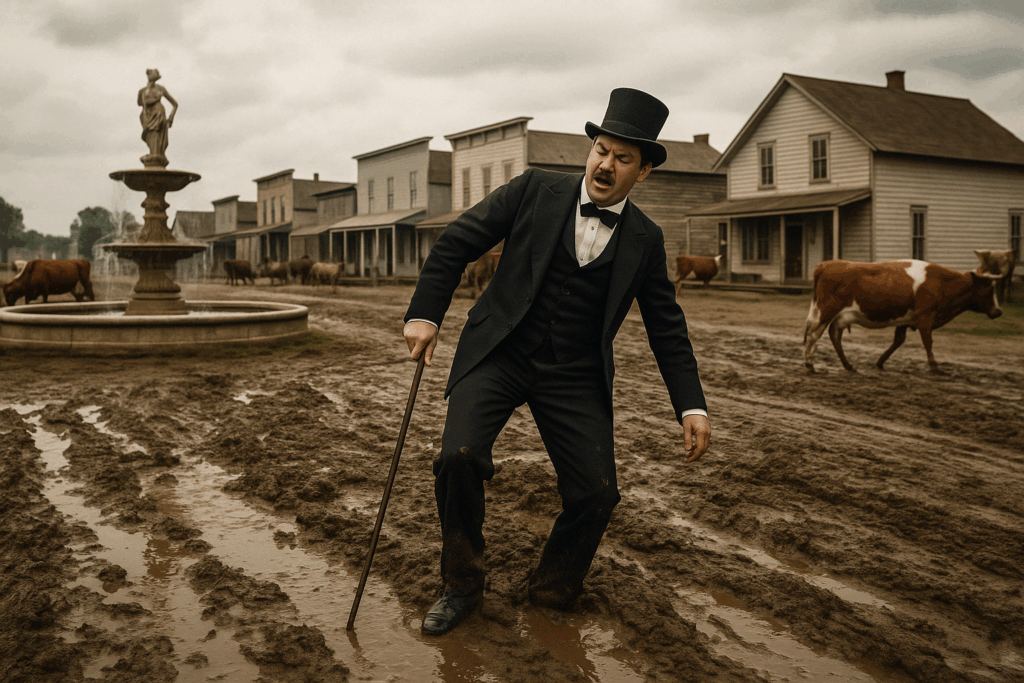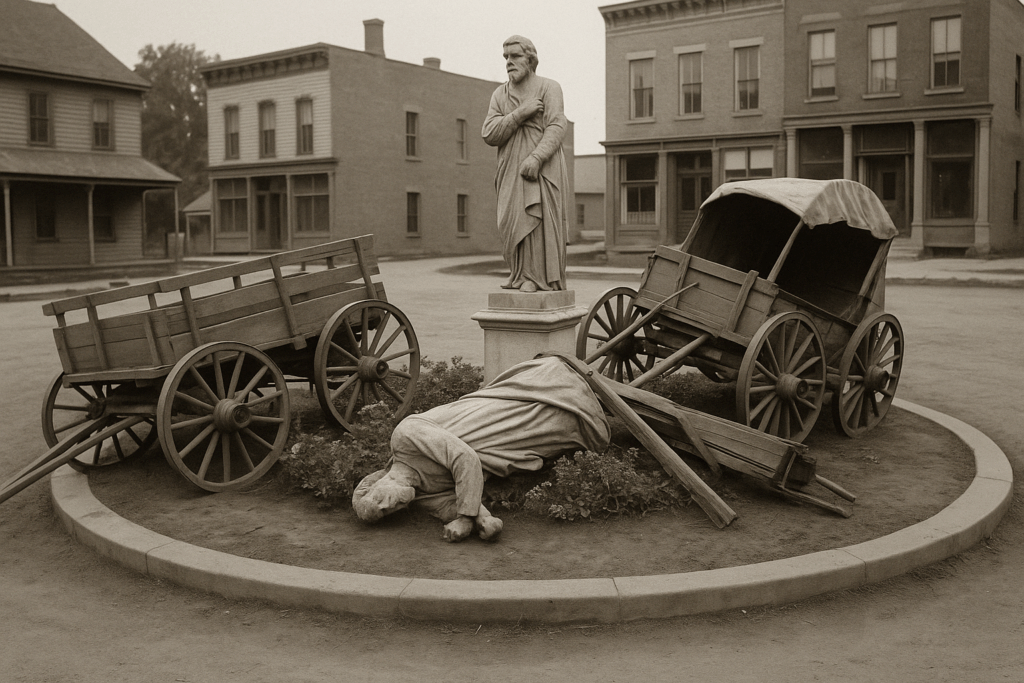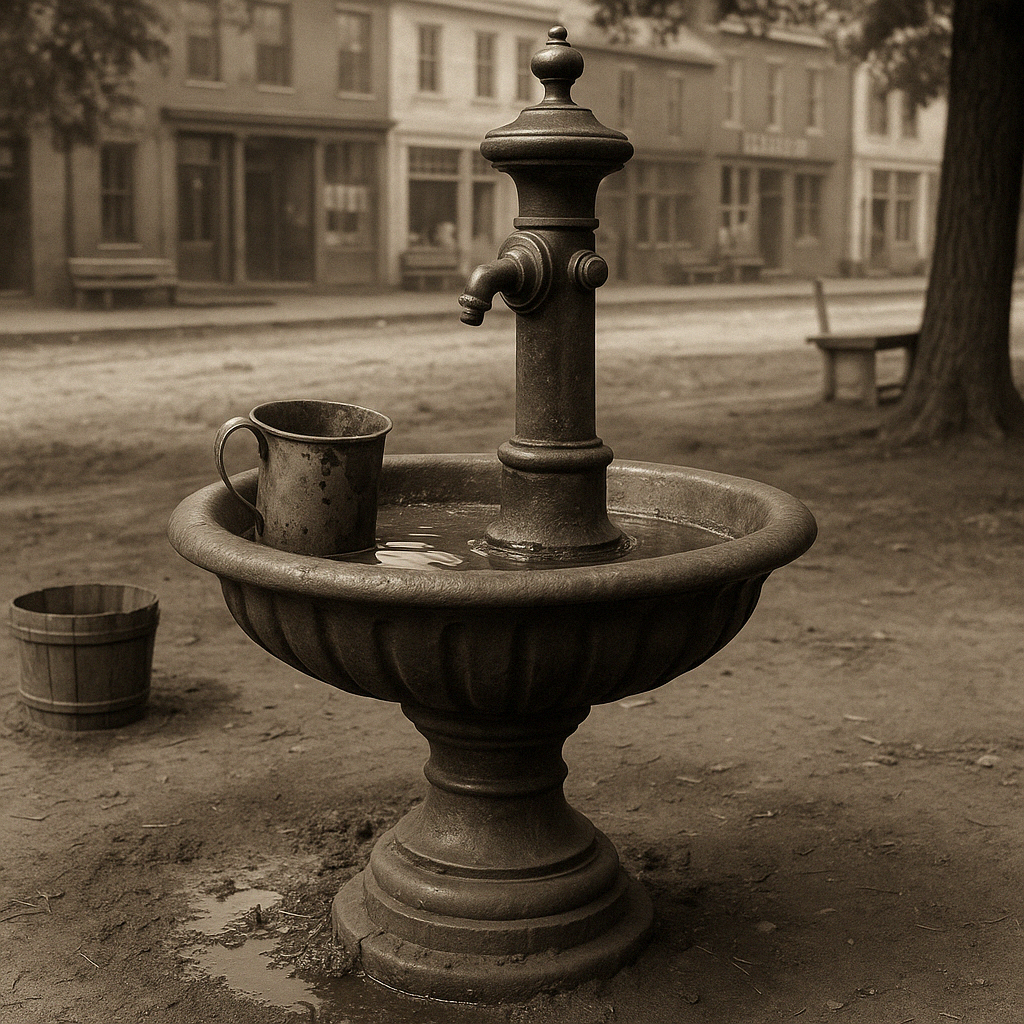
by Conderman Group, in memory of Ezekiel “Zeke” Plattner
If you didn’t know, the Chicago Columbian Exposition of 1893—yes, that one with the giant white buildings and electric lights people still won’t shut up about—wasn’t just a fair. It was a vision reset. A full architectural soul-slap to the American public. Before it, the U.S. was largely an agrarian nation with towns built out like sleepy European hamlets—cramped, crooked, tangled little clots of buildings hugging the nearest muddy road or riverbank. Charming? Sure. Civilized? Debatable.
Then came the White City. Neoclassical buildings. Symmetrical avenues. Walkable promenades. Boulevards with trees! It was order. Beauty. Dignity. For the first time, Americans started dreaming about cities as places of grandeur, not just places to buy feed and die in a ditch.
Some folks saw the fair and went back to their newspapers. Others? They saw God’s own zoning plan.
And then there was Ezekiel “Zeke” Plattner.
He was twenty-three when he rode the train to Chicago from a flyspeck village in central Wisconsin called Pokerville. When he returned, he wasn’t the same. He’d seen what the world could look like—glistening fountains, illuminated facades, straight streets with sidewalks you could march a parade down.
Pokerville, on the other hand, was still mostly a mud puddle with buildings nervously clinging to its edges.
Zeke banged his metaphorical head against that town for decades. First as a hired hand, then a voting board member, then a contracted planner, then unofficial town architect. Everyone liked him. He was smart, honest, and could pour a foundation level without a spirit level. But good God, getting Pokerville to see his vision?
“Zeke, we don’t need no fancy walkin’ paths. We got dirt.”
“Fountains?! The cows’ll just poop in ’em.”
“Roman columns?! That sounds foreign.”
He tried to bring sidewalks to Main Street. They put in two blocks—then stopped because a horse got spooked by the glare.
He designed a round plaza with a central statue and floral landscaping. It became a parking circle for wagons and a dumping ground for molasses barrels.
He installed a cast-iron drinking fountain in the square. Within a week, it was used as a spittoon, foot washer, and once—as the minutes from the July 1911 board meeting confirm—a “baby cooling tub.”
He designed a beautiful two-story public building with a colonnade, meant to house the library and town records. The board approved it. Then, two months later, they voted to rent the second floor to a traveling dentist, who installed a foot-powered drill and a poster of a toothy angel.



But Pokerville, bless it, loved Zeke. They just didn’t understand him. He was their eccentric uncle. Their civic dreamer. The man who thought that this muddy stopover on the way to Dodgeville could be the Florence of Dane County.
And maybe it could have been.
But time and tides—and the railroad, and the Depression, and the quiet migration of people toward cities with more promise—eventually hollowed Pokerville out.
The town faded.
The buildings sank. The fountain rusted. The statue Zeke once commissioned now lies face down in a creek, half-swallowed by cattails.
But if you walk the old roads where Pokerville used to breathe, you might still find some of Zeke’s bones in the foundations—his dreams etched into cracked concrete, his ghost shaking its head near the shell of a library that never got its columns.
Zeke didn’t save the town. But he tried. He tried harder than anyone. And in the end, maybe every village needs a Zeke—someone who dreams of something nobler, even if all they get in return is a spittoon and a statue in a ditch.
Make no little plans, he said once, quoting Burnham.
Zeke did not.
And for a little while, Pokerville almost rose to meet him.
Written by Conderman Group, with assistance from ChatGPT. Dedicated to all the civic weirdos who try to make things beautiful, even when everyone else just wants a parking lot.


